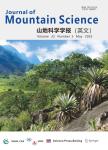版权所有:内蒙古大学图书馆 技术提供:维普资讯• 智图
内蒙古自治区呼和浩特市赛罕区大学西街235号 邮编: 010021

作者机构:College of Resources and Environmental SciencesHunan Normal UniversityChangsha 410081China Hunan Key Laboratory of Geospatial Big Data Mining and ApplicationChangsha 410081China College of Environmental Science and EngineeringHunan UniversityChangsha 410082China
出 版 物:《Journal of Mountain Science》 (山地科学学报(英文))
年 卷 期:2022年第19卷第1期
页 面:228-240页
核心收录:
学科分类:082802[工学-农业水土工程] 08[工学] 0828[工学-农业工程]
基 金:supported by National Natural Science Foundation of China(grant number 42171258,41877084) Natural Science Foundation of Hunan Province(grant number 2021JJ30448)
主 题:Water provision services Supply and demand Spatiotemporal dislocation Water flow Water management and saving policy Xiangjiang River basin
摘 要:Global climate change and increased human consumption have aggravated the uneven spatiotemporal distribution of watershed water resources, affecting the water provision supply and demand state. However, this problem has often been ignored. The present study used the Xiangjiang River basin(XRB) as the study area, and the Integrated Valuation of Ecosystem Services and Trade-offs(InVEST) model, demand quantification model,supply–demand ratio, and water flow formula were applied to explore the spatial heterogeneity, flow, and equilibrium between water supply and demand. The results demonstrated significant spatial heterogeneity in the upstream, midstream, and downstream *** areas of water shortage were mainly located the downstream of the Changsha–Zhuzhou–Xiangtan urban agglomeration, and the Hengyang basin was the most scarcity area. Affected by terrain gradients and human needs, water flow varied from-16.33 × 10^(8) m^(3) to 13.69 × 10^(8) m^(3)from the upstream to the downstream area, which provided a possibility to reduce spatial heterogeneity. In the future, measures such as strengthening water resource system control,sponge city construction, and dynamic monitoring technology should be taken to balance the supply and demand of water in different river sections of the basin. This study can provide references for regulating water resources allocation in different reaches of the basin.